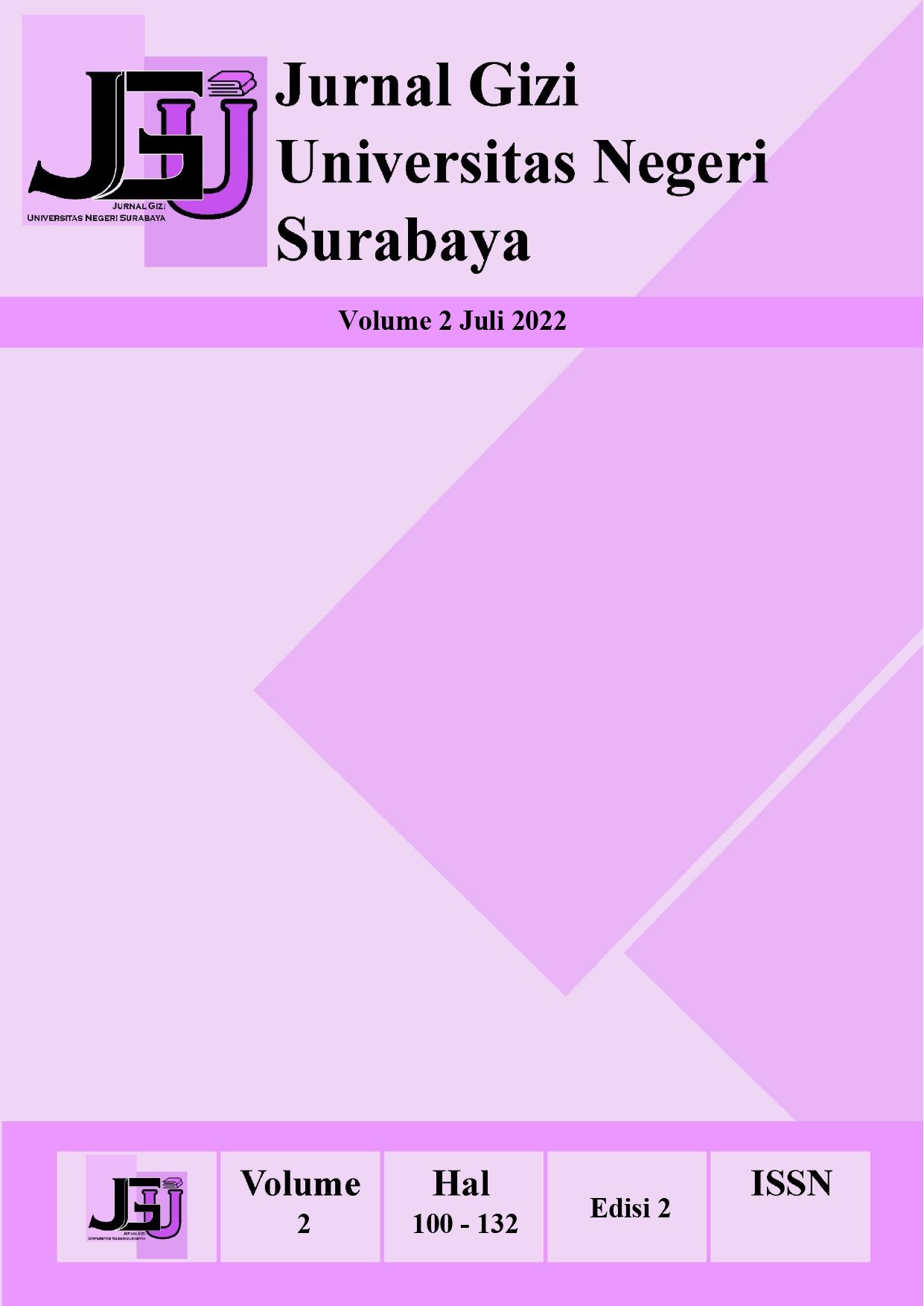Acceptance of Almond Flour and Soy Flour Sticks and Analysis of Magnesium Content, Antioxidant Activity as Snacks for Autism Spectrum Disorder (ASD) Children
Keywords:
Acceptance, Stick Content, Almond Flour, Soy Flour, Autistic ChildrenAbstract
Food for people with autism is one thing that must be considered because it can overcome hyperactive behavior. The function of magnesium is to prevent encephalopathy and developmental delays, while antioxidant compounds can suppress the formation of increased oxidative stress in ASD children. This study aims to determine the acceptability, magnesium content, and antioxidant activity of the stick. This research is a pure experimental research. The treatment in this study, using a comparison of the composition of almond flour and soybean flour, namely 30: 70, 40: 60, 50: 50 which was tested on 40 panelists. Analysis of the data using descriptive techniques, then analyzed using the Man Whitney test (? = 0.05). The results of the hedonic assessment found that there were differences in texture and taste. However, there is no difference in color and aroma. Meanwhile, the results of determining the selected formula indicate that the first formula is the best formula. Analysis of magnesium content showed that per 100 gram stick was 161.88 mg and flavonoid content per 100 gram stick was 46.5915 mg. Sticks with almond flour and soy flour need further research to prove the benefits for children with Autism Specturm Disorder (ASD).Downloads
Download data is not yet available.
Downloads
Published
2022-07-08
How to Cite
Aulia, N. and Ismawati, R. (2022) “Acceptance of Almond Flour and Soy Flour Sticks and Analysis of Magnesium Content, Antioxidant Activity as Snacks for Autism Spectrum Disorder (ASD) Children”, Jurnal Gizi dan Kesehatan Nusantara, 2(2), pp. 100–107. Available at: https://ejournal.unesa.ac.id/index.php/GIZIUNESA/article/view/46804 (Accessed: 29 December 2025).
Issue
Section
Artikel
 Abstract views: 345
,
Abstract views: 345
, PDF Downloads: 585
PDF Downloads: 585


